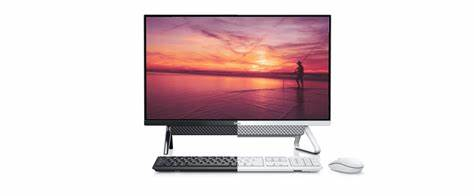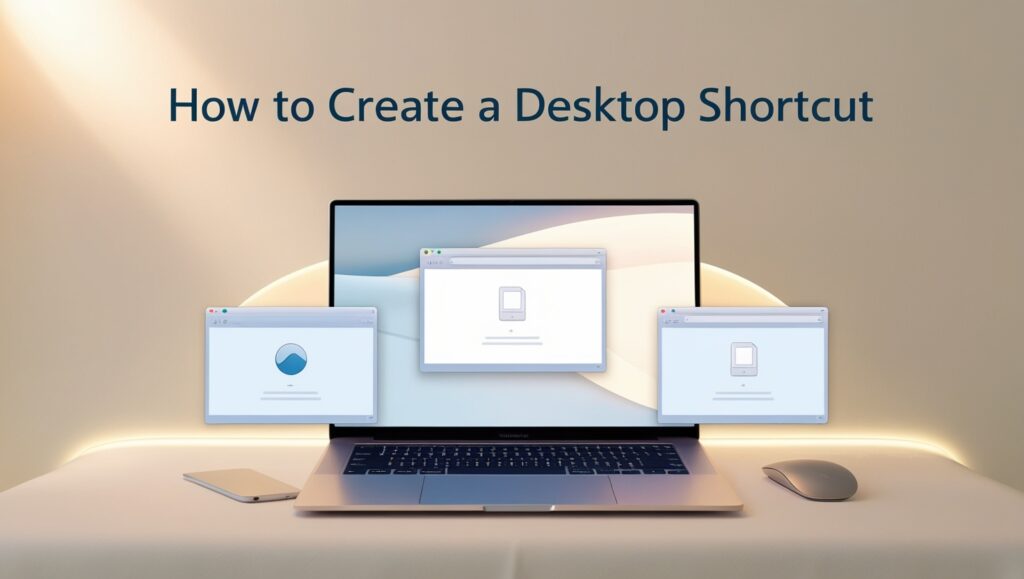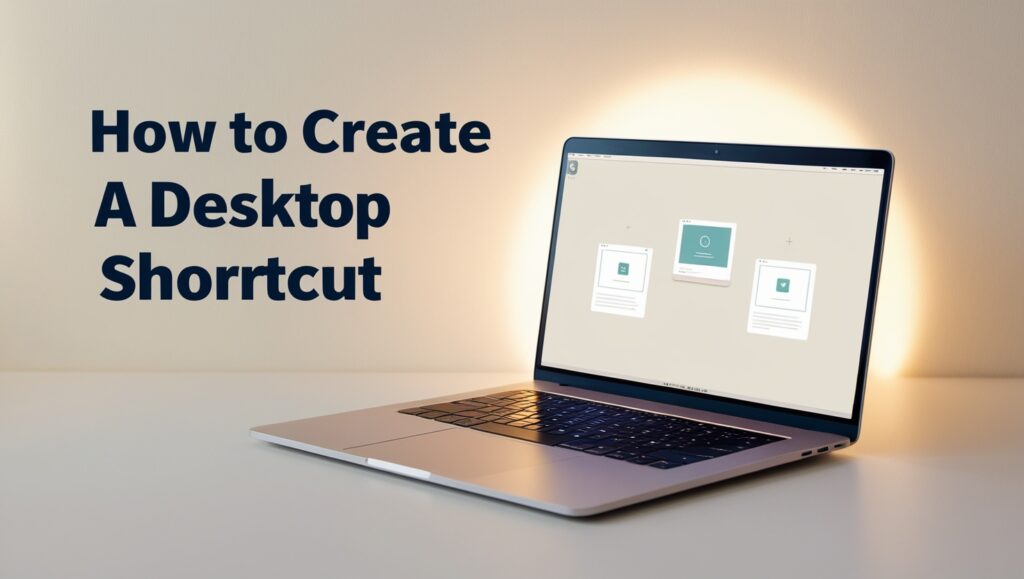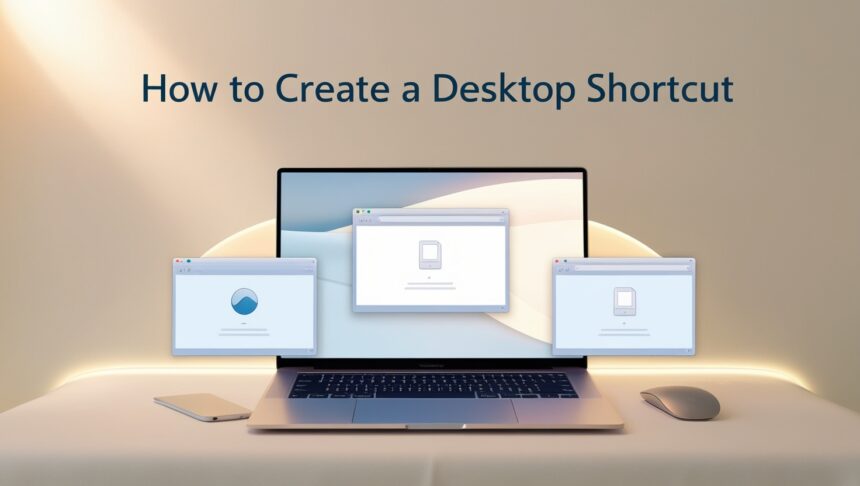In this article, I will discuss the How to Create a Desktop Shortcut so you can reach your favorite apps, files, or websites in a snap.
When those shortcuts sit right on your desktop, you waste less time hunting and get more done. Whether you run Windows or a Mac, the easy steps below work for both systems.
What is Desktop Shortcut?
A desktop shortcut is a little icon sitting on your computers main screen that points straight to a file, folder, app, or even a website. Rather than dig through layer after layer of folders or menus, you just double-click the shortcut and boom-the thing opens right away.

The shortcut itself doesnt hold any of the actual data; it simply nudges your system toward the real storage spot. Thats why shortcuts shine for programs and files you use all the time; they save you a pile of clicks and keep your workspace tidy.
How to Create a Desktop Shortcut

Here’s a simple step-by-step guide on how to create a desktop shortcut on Windows:
For Any File, Folder, or Program
- Right-click on the file, folder, or program you want a shortcut for.
- Select “Send to” → then click “Desktop (create shortcut)”.
- A shortcut will appear on your desktop.
For a Website Shortcut (via Browser)
- Using Google Chrome / Microsoft Edge / Firefox:
- Open the website you want.
- Click and drag the lock icon (next to the URL) to the desktop.
- It will create a clickable shortcut to that webpage.
Using Shortcut Wizard (Any Location)
- Right-click on the desktop → select “New” → then click “Shortcut”.
- Enter the path or URL you want.
- Example: C:\Program Files\appname\app.exe
- Click Next, name your shortcut, then click Finish.
- Your custom shortcut will be created.
Why shortcuts help improve productivity
Saves Time
Open files or apps in seconds instead of hunting through folders.
Reduces Clicks
Less clicking means fewer chances of losing your train of thought.
Enhances Focus
Important tools stay in view, so your eyes-and brain-stay on task.
Simplifies Workflow
Fast access makes juggling tasks smoother and less stressful.
Organizes Work
Shortcuts group vital items together, cutting clutter on your screen.
Supports Consistency
Using the same path each time builds reliable, repeatable habits.
Benefits of Using Desktop Shortcuts
Instant Access: Launch files, programs, or web pages with a single double-click instead of hunting through piles of folders.
Timesaver: Cuts the minutes you waste looking for everyday stuff.
Boosts Productivity: Keeps key tools right under your mouse so you can work faster.
Simple Organization: Lets you line up related shortcuts and tidy your desktop without extra software.
Beginner-Friendly: Perfect for new computer users who prefer plain, no-frills pathways to the resources they need.
Common Issues and Troubleshooting
Shortcut not opening
If nothing happens when you double-click, the file or program might have been moved or deleted. You can either browse to the new location and update the target, or simply delete the shortcut and make a fresh one.
Broken or missing icons
Icons sometimes turn blank or display the wrong picture. Right-click the shortcut, choose Properties, click Change Icon, select a new graphic, and hit OK.
Shortcut opens wrong program
This can occur because the link points to a different file altogether. Just delete the rogue shortcut and drag a fresh link from the correct folder.
Shortcut doesn’t appear on desktop
The link may have been saved in another location such as the taskbar or system tray. Use the search box to find it, then drag it back to your desktop, or create the link again.
Access denied or permission errors
When a shortcut refuses to open, try running it as an admin by right-clicking and picking Run as administrator, or tweak the security settings in the shortcut’s Properties tab.
Tips for Managing Desktop Shortcuts
Group Similar Shortcuts
Put related items in folders named Work, Games, or Tools.
Use Descriptive Names
Give each shortcut a clear name you can read at a glance.
Limit the Number
Only keep must-have links on the desktop; everything else goes in folders.
Arrange Neatly
Line up shortcuts in neat rows or columns, not scattered all over.
Use Custom Icons
Change the picture for each shortcut so you spot it right away.
Delete Unused Shortcuts
Regularly recycle links you never click anymore.
Pin to Taskbar or Start Menu
For daily apps, pin them instead of letting them live on the desktop.
Back Up Shortcut Folders
Save those folders to the cloud or a USB drive so you can restore them fast.
Risk & Considerations

Risks
Security Holes: A visible shortcut lets anyone click straight to files you thought were safe.
Whoops, Deleted: Because shortcuts are so tiny, someone can wipe one out and later scramble because the real file seems missing.
Desktop Jungle: Piling on shortcuts turns a tidy screen into a crowded mess that slows you down instead of speeding you up.
Phantom Link: If you move or rename the original file, the shortcut becomes an empty promise that leads nowhere.
Considerations:
Shortcut Smart: Only copy the link if you truly need regular access; otherwise it just adds noise.
Hide the Secrets: Never drop a shortcut for sensitive documents in plain sight; keep that stuff tucked away where unauthorized eyes cant roam.
Clean Sweep: Set a monthly reminder to trim, rename, or delete stale shortcuts so your workspace stays neat.
Record the Path: Note critical file paths elsewhere so you can rebuild vital shortcuts fast if they ever break.
Pros & Cons
| Pros | Cons |
|---|---|
| Quick access to frequently used items | Can clutter the desktop if overused |
| Saves time by reducing navigation steps | Broken shortcuts if the source is moved or deleted |
| Easy to create and customize | May lead to confusion if misnamed or duplicated |
| Improves workflow efficiency | Can pose security risks for sensitive files |
Conclusion
To sum up By giving you instant access to your favorite programs, files, and websites, desktop shortcuts are an easy yet effective approach to increase productivity.
You may personalize your workspace for ease and productivity by following a few simple steps, regardless of whether you use Mac or Windows.
By carefully controlling and arranging shortcuts, you can maintain a clutter-free desktop and make sure that anything you need is only a double-click away. Create shortcuts now to operate more efficiently rather than more laboriously.
FAQ
How do I create a shortcut for an application on Windows?
Right-click the app in the Start menu or file location, select “Send to,” then choose “Desktop (create shortcut).”
Can I create a shortcut to a website?
Yes! Drag the website’s URL from your browser’s address bar to the desktop or create a new shortcut and enter the URL manually.
What should I do if a shortcut stops working?
Check if the original file or app was moved or deleted. Update the shortcut’s target path or recreate the shortcut.














